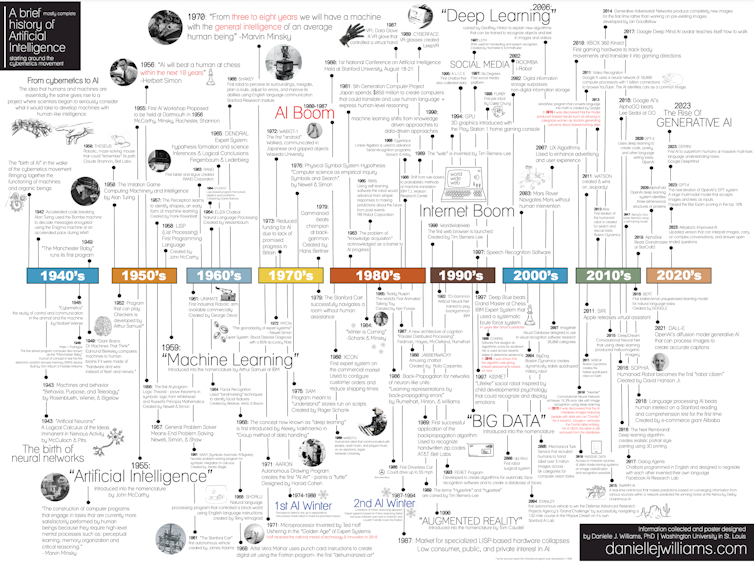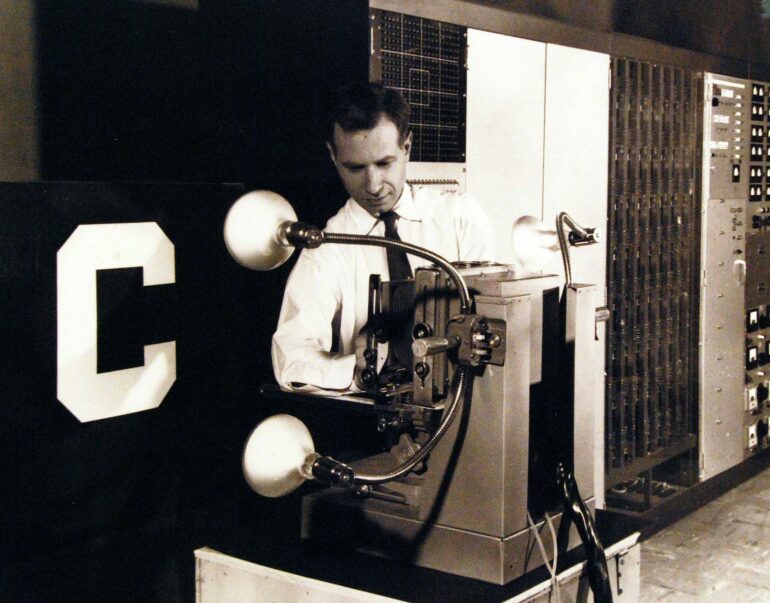A roomsize computer equipped with a new type of circuitry, the Perceptron, was introduced to the world in 1958 in a brief news story buried deep in The New York Times. The story cited the U.S. Navy as saying that the Perceptron would lead to machines that “will be able to walk, talk, see, write, reproduce itself and be conscious of its existence.”
More than six decades later, similar claims are being made about current artificial intelligence. So, what’s changed in the intervening years? In some ways, not much.
The field of artificial intelligence has been running through a boom-and-bust cycle since its early days. Now, as the field is in yet another boom, many proponents of the technology seem to have forgotten the failures of the past – and the reasons for them. While optimism drives progress, it’s worth paying attention to the history.
The Perceptron, invented by Frank Rosenblatt, arguably laid the foundations for AI. The electronic analog computer was a learning machine designed to predict whether an image belonged in one of two categories. This revolutionary machine was filled with wires that physically connected different components together. Modern day artificial neural networks that underpin familiar AI like ChatGPT and DALL-E are software versions of the Perceptron, except with substantially more layers, nodes and connections.
Much like modern-day machine learning, if the Perceptron returned the wrong answer, it would alter its connections so that it could make a better prediction of what comes next the next time around. Familiar modern AI systems work in much the same way. Using a prediction-based format, large language models, or LLMs, are able to produce impressive long-form text-based responses and associate images with text to produce new images based on prompts. These systems get better and better as they interact more with users.

A timeline of the history of AI starting in the 1940s. Click the author’s name here for a PDF of this poster.
Danielle J. Williams, CC BY-ND
AI boom and bust
In the decade or so after Rosenblatt unveiled the Mark I Perceptron, experts like Marvin Minsky claimed that the world would “have a machine with the general intelligence of an average human being” by the mid- to late-1970s. But despite some success, humanlike intelligence was nowhere to be found.
It quickly became apparent that the AI systems knew nothing about their subject matter. Without the appropriate background and contextual knowledge, it’s nearly impossible to accurately resolve ambiguities present in everyday language – a task humans perform effortlessly. The first AI “winter,” or period of disillusionment, hit in 1974 following the perceived failure of the Perceptron.
However, by 1980, AI was back in business, and the first official AI boom was in full swing. There were new expert systems, AIs designed to solve problems in specific areas of knowledge, that…



